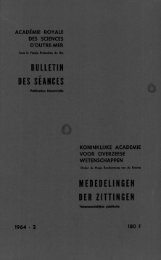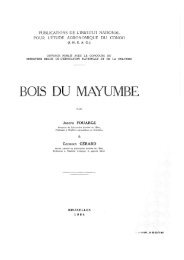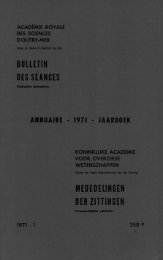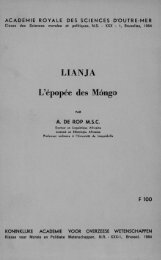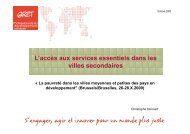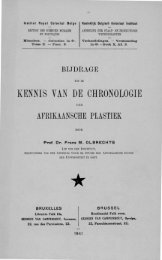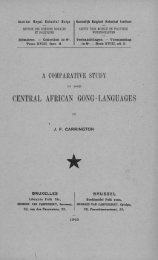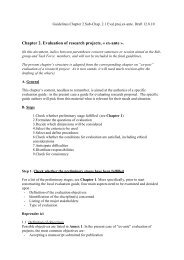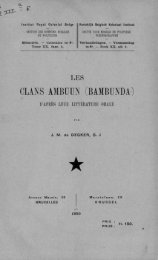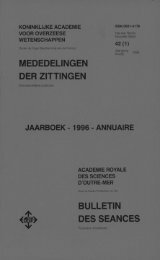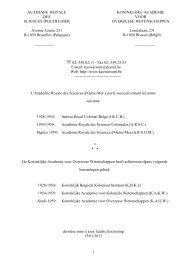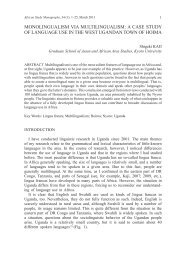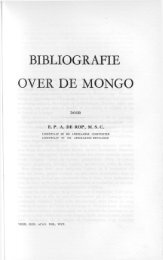(1973) n°3 - Royal Academy for Overseas Sciences
(1973) n°3 - Royal Academy for Overseas Sciences
(1973) n°3 - Royal Academy for Overseas Sciences
Create successful ePaper yourself
Turn your PDF publications into a flip-book with our unique Google optimized e-Paper software.
Streamline<br />
— 590 —<br />
Solid matrix<br />
Streamline pattern in a porous medium matrix.<br />
to a relation between the permeability and the dispersion coefficients.<br />
However, the problem remains unsolved because the solution<br />
still involves the knowledge of the detailed unknown<br />
medium geometry. Another approach to the understanding of<br />
dispersion was an analytical study by T a y l o r (32) who investigated<br />
the dispersion of two fluids of the same physical properties<br />
and with an initial longitudinal concentration gradient<br />
of a passive contaminant, the fluids being contained in a straight<br />
capillarly tube with steady fully developed laminar flow prevailing.<br />
It was found that the dispersion coefficient which measures<br />
the rate at which the contaminant will spread out axially,<br />
increases with increasing velocity differences across the capillary<br />
tube and with increasing dimensions of the tube. The results<br />
were later applied (7, 26a, 26b) to a porous medium, assuming<br />
that the porous medium can be modeled by a random array of<br />
capillarly tubes. This application is somewhat speculative because<br />
dispersion in a porous medium is not only created by<br />
microscopic velocity differences in the interstices between particles,<br />
but also by macroscopic effects such as channeling.<br />
In practice, the relative importance of convection over dispersion<br />
is measured by defining a Peclet number Pe,<br />
Pe = vd/K<br />
It was shown (18) that the coefficients of lateral dispersion and<br />
of longitudinal dispersion both increase uni<strong>for</strong>mly as values<br />
of Pe increase from 0(10) and 0(1) respectively.



